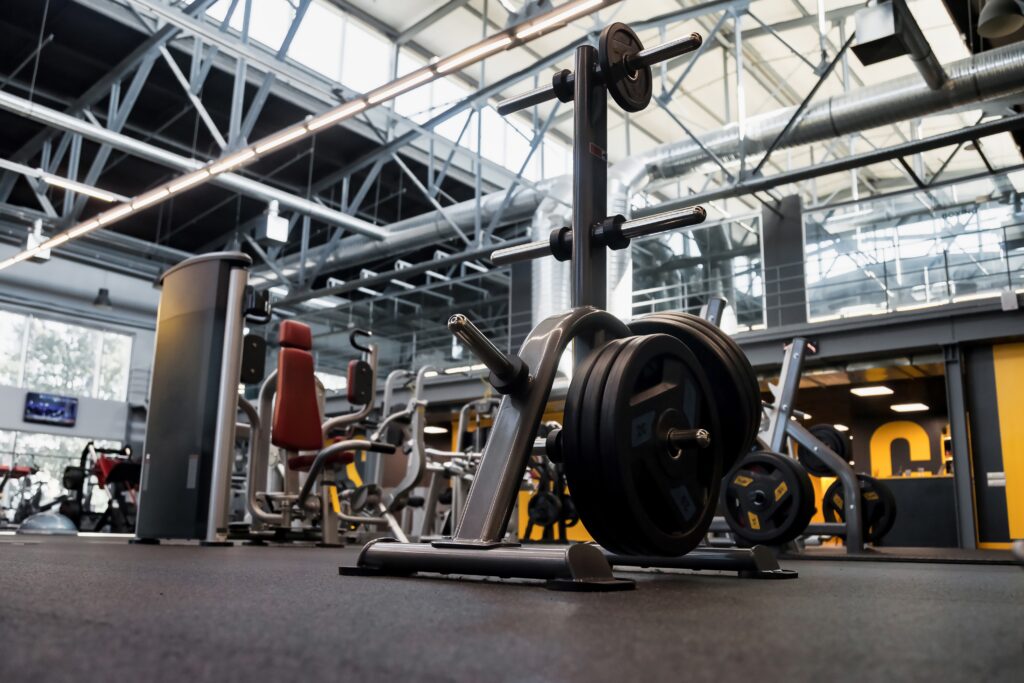Equipping a commercial gym is not an easy task. It involves a lot of time, investment, and stress that could lead to issues further down the line. How many treadmills do you need? What about ellipticals? How many weights are you going to have to order?
This is all before you even think about the question of whether to purchase or lease the equipment in the first place (generally, it’s a much better idea to lease when you’re starting out and low on capital).
Below, we’ve provided an extensive, no-nonsense gym equipment list for you to go through.
Let’s get into it.
Essential Equipment Categories for Commercial Gyms
Cardio Equipment
- Treadmills: These are the backbone of any gym. Offer a variety of options, including motorized, non-motorized, incline, and decline models.
- Elliptical Trainers: Low-impact and versatile, ellipticals cater to a wide range of fitness levels.
- Stationary Bikes: Upright and recumbent bikes should be included to accommodate different exercise styles or preferences. Consider adding spin bikes for high-intensity workouts.
- Rowing Machines: Excellent for full-body workouts, rowing machines offer a low-impact alternative to running and are a well-known favorite for most gym-goers.
- Stair Climbers: Provide a challenging cardio workout that simulates stair climbing.
Strength Training Equipment
- Free Weights: A combination of dumbbells, barbells, and kettlebells is essential for catering to a diverse clientele. Make sure you have a varied set for all sizes and abilities, otherwise you’re going to see people moving to other gyms that better cater to them.
- Weight Machines: Offer a structured approach to strength training, particularly for beginners. Include machines for major muscle groups.
- Plate-Loaded Equipment: Versatile and durable, plate-loaded machines provide a wide range of exercise options.
- Functional Trainers: Cable-based systems offer endless exercise possibilities and are popular for group fitness classes.
Make sure that you also provide the right training for your members. A large majority of gym injuries happen when using weights, and it can be a very dangerous activity if people stretch their limits. Ensure that you have clear instructions or signage for your weights, and try to have someone supervising or providing advice whenever possible.
Group Fitness Equipment
Yoga Mats: Essential for yoga, Pilates, and other mat-based classes.
Step Platforms: Versatile for aerobic and strength training classes.
Barre Equipment: For barre fitness classes, including ballet barres and small props.
Group Cycling Bikes: Indoor cycling bikes for high-energy group workouts.
Group fitness equipment is vital if you want to provide a more collective, community-focused experience for your members. Make sure that you’re laying out the equipment in a way that makes your members feel comfortable and part of the experience.
Accessory Equipment
- Foam Rollers: Essential for post-workout recovery.
- Medicine Balls: Versatile for core strength and functional training.
- Resistance Bands: Offer a portable and affordable strength training option.
- Jump Ropes: A simple yet effective cardio and coordination tool.
- Gymnastics Rings: For advanced calisthenics and functional training.
It’s the extra touches that matter most to many members. Take the time to think about what you can invest a little more time and space in. If you find that you have a majority of members focusing on certain exercises like spinning, rowing, or weight lifting, make sure to include additional equipment that makes their exercise more enjoyable. For example, additional mirrors for weight training can be helpful for form, while many people may enjoy a TV in view of the spin bikes to help them pass the time.
What to Consider When Building Your Gym Equipment List
There a plenty of things to consider when you build your gym equipment list, but the most important is to be realistic. You may have a dream of what your gym could look like in the future, but getting too excited and overspending your budget could lead to trouble down the road. Use a thorough gym business plan to allow yourself to plan and budget accordingly.
- Durability: Commercial gym equipment undergoes heavy use, so invest in durable machines.
- Space Efficiency: Maximize your gym floor space by choosing equipment that is compact and functional.
- User Experience: Make sure you clearly instruct users on equipment and how to enjoy it best.
- Maintenance Requirements: The preventative cost of regularly checking your equipment could be huge. Make sure you set up a regular checklist for you or your employees to follow.
- Budget: Allocate funds for equipment, installation, and maintenance.
- Target Market: Tailor your equipment selection to your gym’s target clientele (e.g., age, fitness level, interests).
Finally, as we mentioned above, consider leasing your equipment when setting up your gym. It can save you a considerable amount of time and money in the early days of your gym as you understand what your members are looking for.


